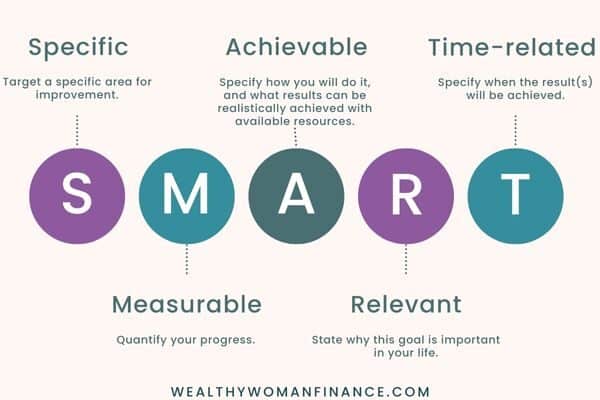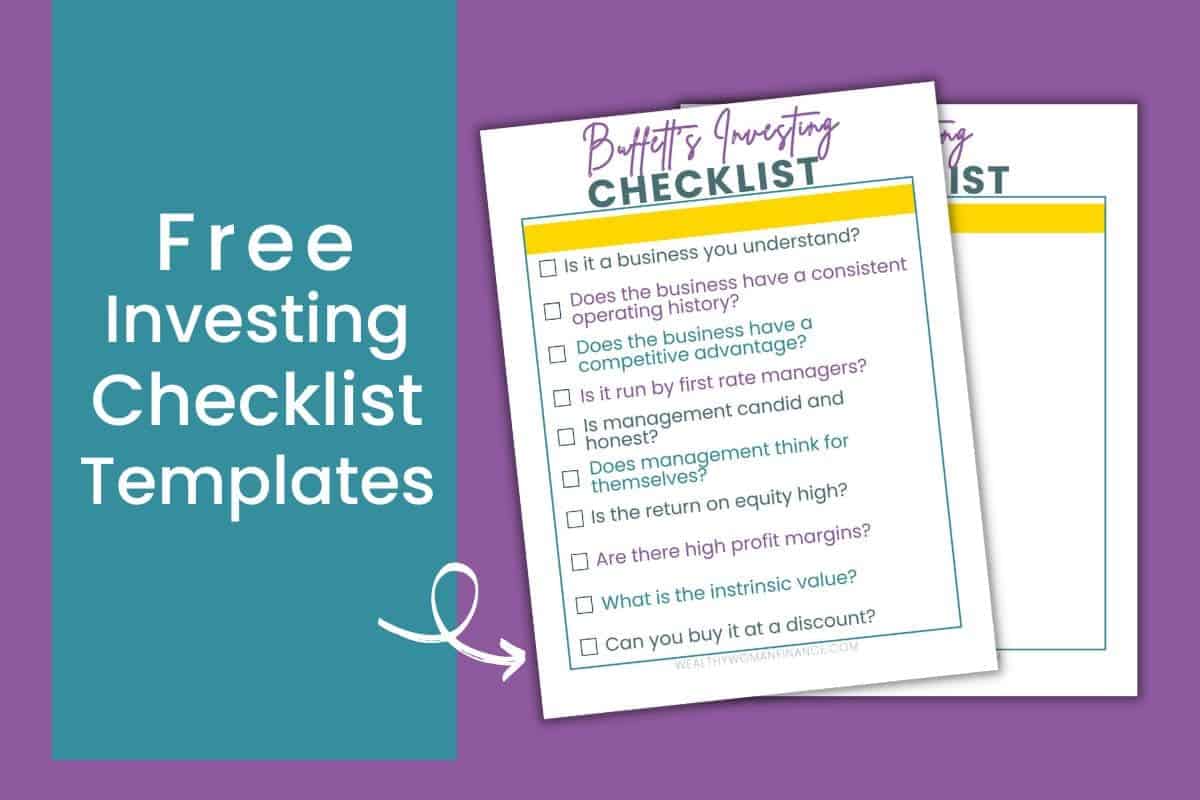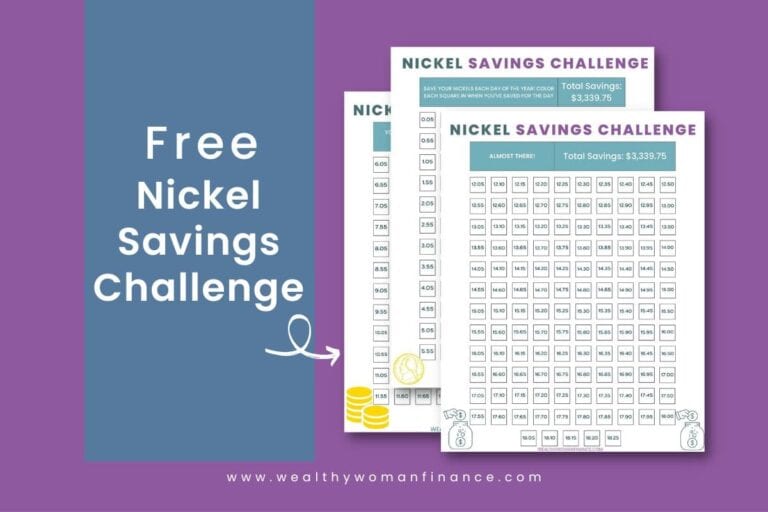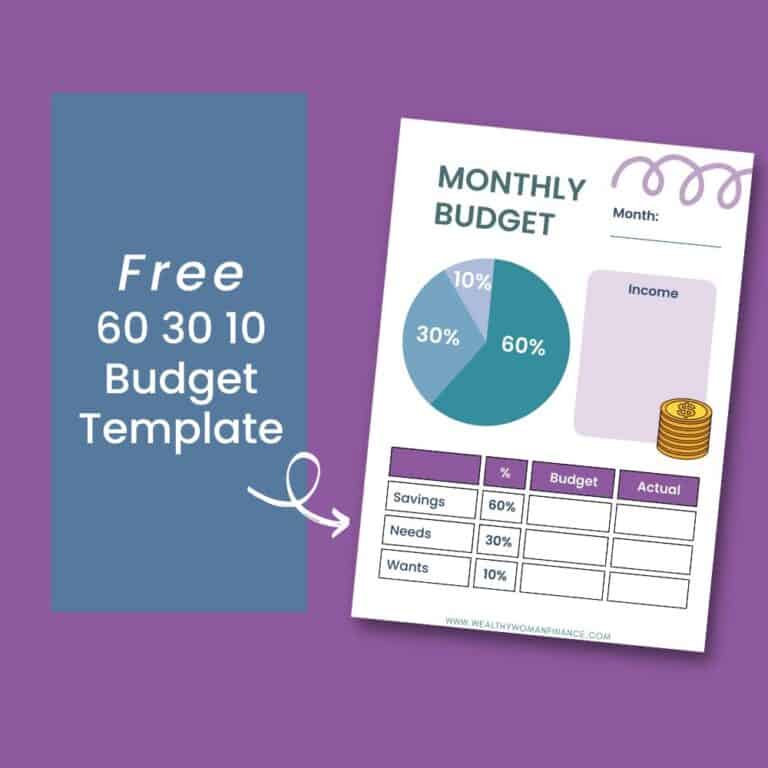Investing Checklist for Beginners: What Would Buffett Do?

This investing checklist can make all the difference in helping you make smart decisions with your money. Investing is an essential part of building wealth, but it can be intimidating for beginners.
When my husband and I were first married, we ventured to Omaha to see Warren Buffett and Charlie Munger. It’s one of my favorite memories!
Above all, what I admired was their simple, non-nonsense approach to investing. And get this – Buffett uses the same questions to guide his investing every time. It’s an investing checklist in his head!
Why an Investing Checklist?
Turning investing into a process, like Buffett, makes it easier to get consistent results. When you know what to do step-by-step, you are less likely to get stuck in the weeds. And each decision you make will be clear and unbiased.
While Warren Buffet’s investment checklist is a beautiful start, you can also tweak his process. Snag his and a blank template at the end of the article!
Understanding Investing
Investing is the process of putting your money to work for you. You plant seeds today that will grow into something more valuable in the future.

Common investments include:
- Stocks: A share of ownership in a company.
- Bonds: A loan you make to a government or corporation, which pays you back with interest.
- Mutual funds & ETFs: A pool of money from multiple investors that buys a diverse range of stocks, bonds, or other assets. ETFs function like mutual funds but are traded like stocks.
- Real estate: Owning property, such as land or buildings, for rental income or price appreciation.
Keep in mind that all investments come with risk. To mitigate this, spread your money across different types of assets. This way, if one investment performs poorly, the others may still help balance your overall portfolio.
Set Your Investment Goals & Strategy
Before investing, establish your financial goals and strategy.

- Write down your short-term and long-term goals. These could include:
- Establishing an emergency fund (top priority!)
- Purchasing a car or home
- Saving for retirement
- Funding a child’s education
When setting goals, ensure they are SMART: specific, measurable, achievable, relevant, and time-bound.
2. Next, prioritize based on their importance and the time you have to achieve them.
3. After you have a clear list, consider your risk tolerance. This is a crucial factor in determining the investments you’ll want.

Related: Key Financial Questions to Ask Yourself
Where to Start Investing
Retirement accounts such as 401(k)s and Roth IRAs offer tax advantages with long-term growth potential. These make them the best place to start!
Pro Tip: Review your retirement plan at least once a year to ensure you are well diversified and it aligns with your goals.
Once you’ve utilized your retirement accounts, open a joint account at an online brokerage to continue investing.
Investing Checklist For Beginners
“You only have to do a very few things right in your life so long as you don’t do too many things wrong.”
Warren buffett
Here’s the investing cheat sheet inspired by famed investor Warren Buffett.
1. Is this a business that you comprehend? Is it simple and clear?
“Never invest in a business you cannot understand.” – Warren Buffett
2. Does the business have a consistent operating history?
You want a business that has decades of steady results, selling the same products and services for years.
Buffett likes companies that are calm and steady.
3. Does the business have a competitive advantage (a moat)? Or favorable long-term prospects?
Examples of “moats” include:
- exclusive licenses or patents
- market positioning
- strong brands
- proprietary manufacturing know-how
- and high customer switching costs
These allow a business to have high returns for many years.
4. Is the company run by first-rate managers?
Buffett wants managers who think like owners. He wants to see that they return excess capital to shareholders via buying back shares or raising dividends.
5. Is management candid?
Does management admit mistakes? Buffett wants transparent managers who report both positive and negative news. Management also gives credit to others and provides insights into strategy. In Buffett’s eyes, candor builds credibility and trust.
“The CEO who misleads others in public may eventually mislead himself in private.”
6. Does management think for themselves?
Do managers make decisions based on what’s best for the business or the latest trend on Wall Street? Great managers think for themselves and resist the popular peer pressure.
7. Is the return on equity high?
Buffett prefers the return on equity instead of the earnings per share, stating that return on equity better reflects the true numbers. Seek companies that regularly retain a high ROE without excessive leverage.
Buffett also likes to look at owner earnings. This is net income plus non-cash charges like amortization and depreciation, minus ongoing capital expenditures and working capital needed to sustain the business.
8. Are there high profit margins?
Companies with high-profit margins have a distinct advantage when costs go up. Compare margins to past years and competitors. Consistently wider margins indicate a moat, pricing power, or an ideal low-cost operation.
9. What is the intrinsic value of the business?
Buffett determines the value of a business by looking at the net cash flows expected to occur over the life of the business, discounted at an appropriate interest rate. He uses conservative assumptions to help cover any miscalculations.
Learn more about calculating intrinsic value >>
10. Can you buy it at a significant discount to intrinsic value?
Buffett wants at least a 30% margin of safety between his estimated intrinsic value and purchase price. This allows for mistakes in evaluating the company, and by itself, is one of the biggest reasons he’s been so successful.
Find out more about calculating margin of safety >>
“It is not necessary to do extraordinary things to get extraordinary results.”
warren buffett
How to Build Your Investing Checklist
To create a custom investing checklist, start with defining your strategy and goals.
Next, determine the metrics you want to use. This could be management quality, company positioning, growth potential, and/or financial ratios. Your research process should involve both qualitative and quantitative analysis.
Your custom investing checklist will evolve with your learning and experiences. But a clear investing checklist guides informed and disciplined decisions. And keeps you focused on long-term financial goals.
Related:
Free Investment Checklist Pdf for Beginners

Related: End of Year Personal Finance Checklist
What’s Next?
Most successful investors remain patient and focus on the big picture rather than chasing quick gains. So, take your time, do your research, and use your investing checklist to make informed decisions.






